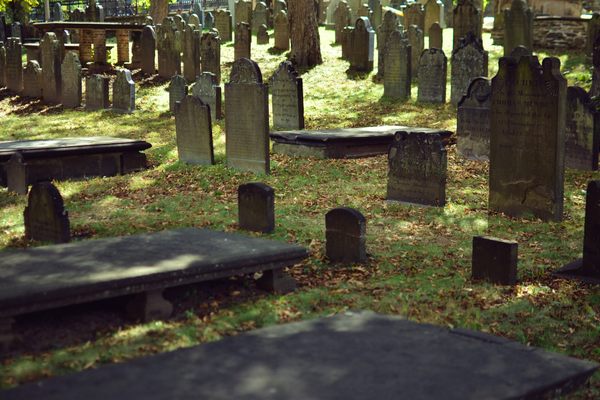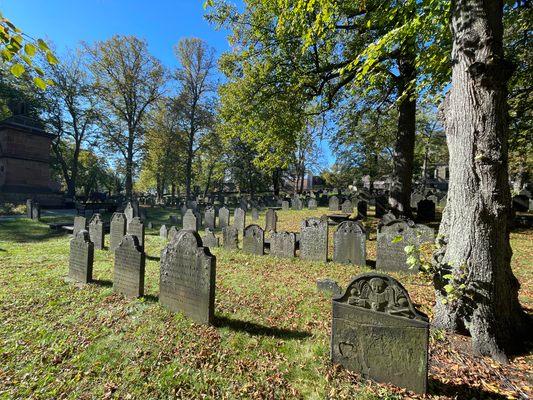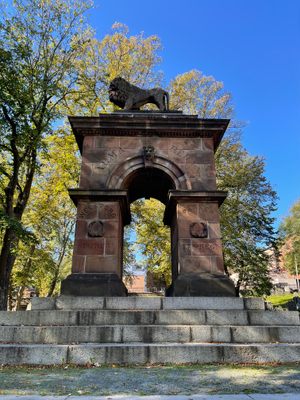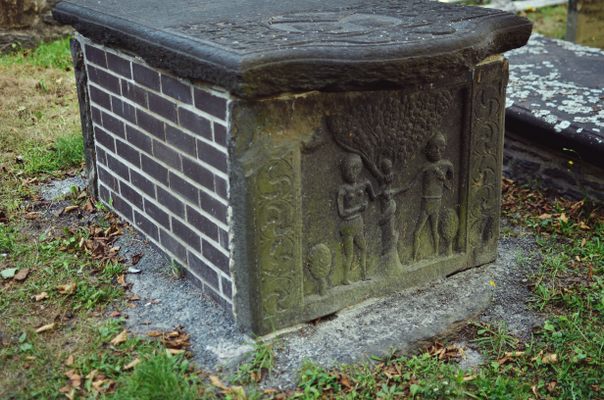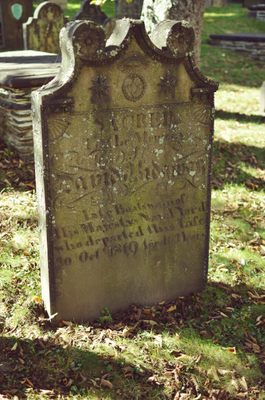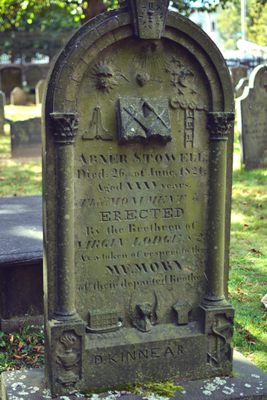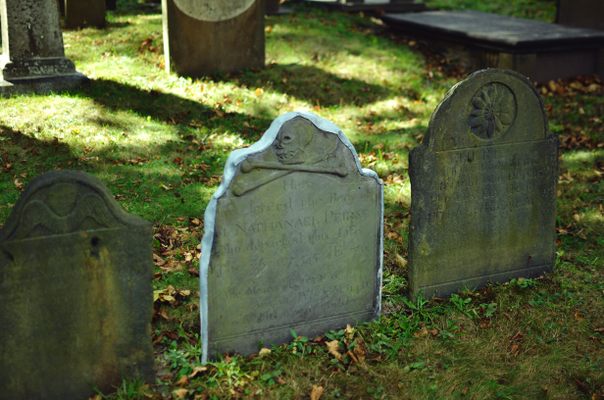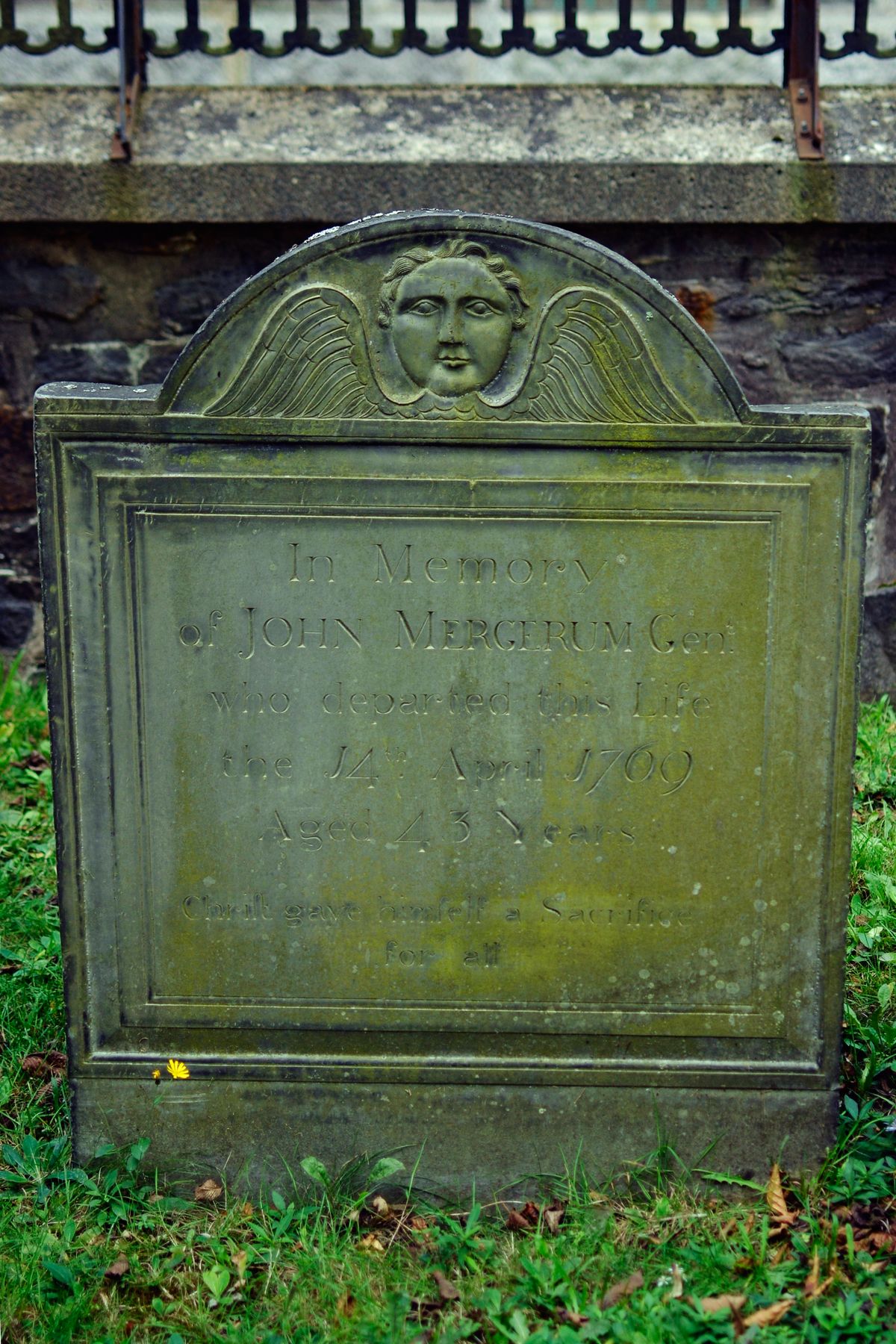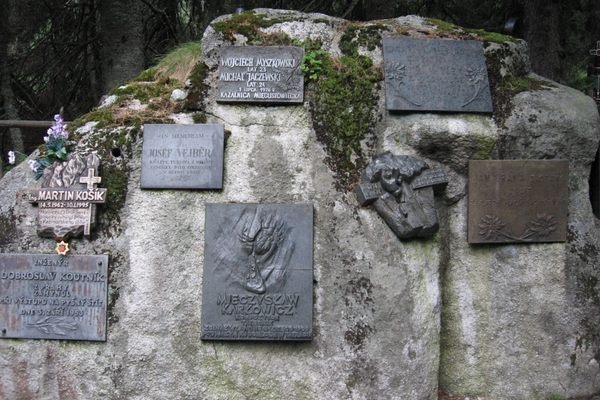About
The Old Burying Ground, a National Heritage Site, is one of the older cemeteries in Canada, and the first (and for a while, only) cemetery in Halifax. First established in 1749 with the founding of the settlement, the non-denominational graveyard stopped accepting bodies in 1844—i.e. before many Canadian cities were founded.
The small lot on Barrington, on the south edge of the downtown core, holds a reported 12,000 bodies, only 1,300 of which are represented by haphazardly placed gravestones. The Old Burying Ground Foundation has been restoring the site since the 1980s.
Interpretive signage created by the Foundation explains not just the history of the site but some context for the gravestones: older and more stark designs (skulls and bones) give way to later, more metaphoric imagery such as wings, cherubs' heads, and weeping willows (and urns, strangely). While there are no mausoleums—only box tombs, headstones, and table tombs—the masonry has "outstanding artistic merit," according to some scholars.
Other studies detail the history of this cemetery at the edge of the original settlement, badly planned and swallowed up by urbanity. Thomas Haliburton, circa 1835, reportedly described the Old Burying Ground as "a nasty dirty horrid lookin' buryin' ground there - it's filled with large grave rats as big as kittens, and the springs of black water there, go through the chinks of the rocks and flow into all the wells and fairly pyson the folks - it's a dismal place, I tell you."
Perhaps the most notable interment is Major General Robert Ross, responsible for the barely-effective yet oft-cited burning of the White House in 1814. He died in Baltimore, in the Battle of North Point; his body was shipped home in a barrel of rum, and interred with great ceremony. Meanwhile, the most interesting gravestone is easily that of Abner Stowell, mason.
The cemetery was immortalized (as "Old St John's Cemetery") as Anne Shirley's refuge in Anne of the Island, as she copes with city life in Kingsport (Halifax) during her university years:
"Every citizen of Kingsport feels a thrill of possessive pride in Old St. John’s, for, if he be of any pretensions at all, he has an ancestor buried there, with a queer, crooked slab at his head, or else sprawling protectively over the grave, on which all the main facts of his history are recorded. For the most part no great art or skill was lavished on those old tombstones. The larger number are of roughly chiselled brown or gray native stone, and only in a few cases is there any attempt at ornamentation. Some are adorned with skull and cross-bones, and this grizzly decoration is frequently coupled with a cherub’s head. Many are prostrate and in ruins. Into almost all Time’s tooth has been gnawing, until some inscriptions have been completely effaced, and others can only be deciphered with difficulty."
The Foundation's documentation of buried people, as well as notable burials, is ongoing, but you can check out their website for the database so far.
Related Tags
Published
May 3, 2016
